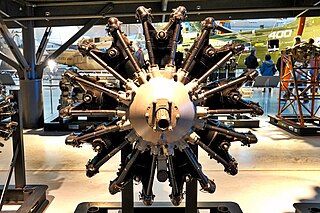
Marion is a town in Grant County, Wisconsin, United States. The population was 517 at the 2000 census.

Aagaard Glacier, also known as Glaciar Alderete, is an 8-mile (13 km) long Antarctic glacier which lies close to the east of Gould Glacier and flows in a southerly direction into Mill Inlet, on the east coast of Graham Land. It was charted by the Falkland Islands Dependencies Survey (FIDS) and photographed from the air by the Ronne Antarctic Research Expedition during December 1947; it was named by the FIDS for Bjarne Aagaard, a Norwegian authority on Antarctic whaling and exploration.
The Electoral district of Whittlesea was an electoral district of the Legislative Assembly in the Australian state of Victoria.
No. 517 Squadron RAF was a meteorological squadron of the Royal Air Force during the Second World War.
Achaean Range is a mountain range rising to 2,577 metres (8,455 ft) in the central part of Anvers Island in the Palmer Archipelago. It is bounded on the east by Iliad Glacier and Trojan Range and on the west by Marr Ice Piedmont, and extends northwest from Mount Agamemnon for 10 kilometres (6 mi), curving northeast for a further 19 km (12 mi) to Mount Nestor. Surveyed by the Falkland Islands Dependencies Survey (FIDS) in 1955 and named by the United Kingdom Antarctic Place-Names Committee (UK-APC) for the Achaeans, one of the opposing forces of the Trojan War in Homer's Iliad.
Intiédougou is a town in the Bondigui Department of Bougouriba Province in south-western Burkina Faso. The town has a population of 1,170.
Sokourani is a village in the Ouo Department of Comoé Province in south-western Burkina Faso. The village has a population of 246.

The Lycoming R-680 is a nine-cylinder air-cooled radial engine, the first aero engine produced by Lycoming. The engine was produced in two types, the E and B series; both are essentially the same. The B4E was available in a trainer version with a front exhaust collector "ring" for use without cylinder air baffles. R-680 received Approved Type Certificate No. 42 on 4 Feb 1930.
Eucaliptus is a small town in Bolivia. In 2010 it had an estimated population of 2354.
Caleufú is a town in Rancul Department of La Pampa Province in Argentina.
The Latady Mountains are a group of mountains rising west of Gardner Inlet and between Wetmore Glacier and Ketchum Glacier, in southeastern Palmer Land, Antarctica.
Beaglehole Glacier is a glacier between Spur Point and Friederichsen Glacier on the east coast of Graham Land. It was named by the UK Antarctic Place-Names Committee after John Cawte Beaglehole, New Zealand historian of the Antarctic and biographer of Captain James Cook.
Nilsen Plateau is a rugged, ice-covered plateau in Antarctica. When including Fram Mesa, the plateau is about 30 nautical miles long and 1 to 12 nautical miles wide, rising to 3,940 metres (12,930 ft) high between the upper reaches of the Amundsen and Scott glaciers, in the Queen Maud Mountains. Discovered in November 1911 by the Norwegian expedition under Roald Amundsen, and named by him for Captain Thorvald Nilsen, commander of the ship Fram.
Mount Waugh is a mountain, 585 m, standing at the south side of Beascochea Bay 3.5 nautical miles (6 km) northeast of Nunez Point, on the west coast of Graham Land. First charted by the French Antarctic Expedition under Charcot, 1908–10. Named by the United Kingdom Antarctic Place-Names Committee (UK-APC) in 1959 for W.A. Waugh, American biochemist who, with Charles Glen King, first identified the antiscorbutic component from lemon juice, making possible the production of synthetic vitamin C to prevent scurvy, in 1932.
Krebs Glacier is a glacier flowing west into the head of Charlotte Bay on the west coast of Graham Land, Antarctica. It was charted by the Belgian Antarctic Expedition under Gerlache, 1897–99, and was named by the UK Antarctic Place-Names Committee in 1960 for Arthur Constantin Krebs, who, with Charles Renard, constructed and flew the first dirigible airship capable of steady flight under control, in 1884.
Murray Island is an island 6 nautical miles long lying at the south-west side of Hughes Bay, off the west coast of Graham Land, Antarctica.
Sepúlveda Point is the south entrance point of Recess Cove, in Charlotte Bay on the Danco Coast. The feature was named "Punta Sepúlveda" by the Chilean Antarctic Expedition of 1952, after Teniente (Lt.) Hernan Sepúlveda Gore, of the patrol ship Lientur which worked in the area.

Larsen Inlet is an inlet, formerly ice-filled, 12 nautical miles long in a north–south direction and 7 nautical miles wide, between Cape Longing and Cape Sobral along the east coast of Graham Land, Antarctica.
Parthenina interstincta is a rather widely distributed species of sea snail, a marine gastropod mollusk in the family Pyramidellidae, the pyrams and their allies.






